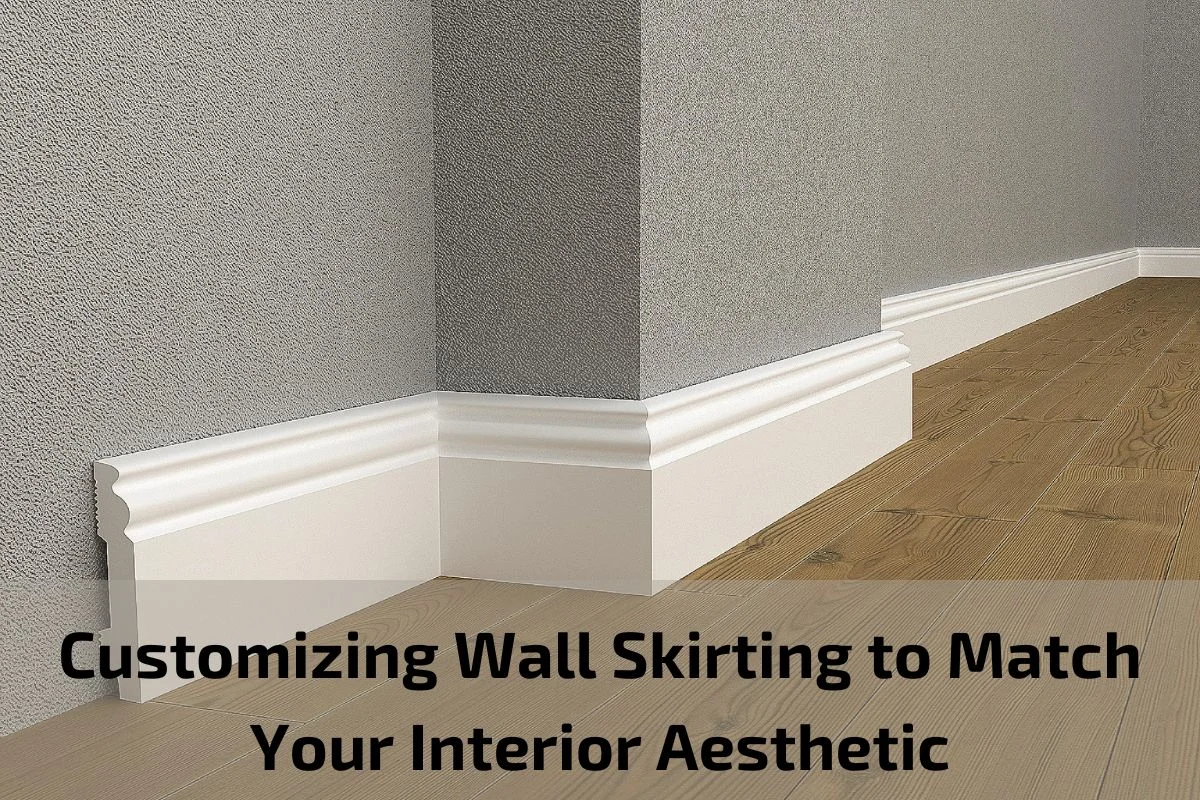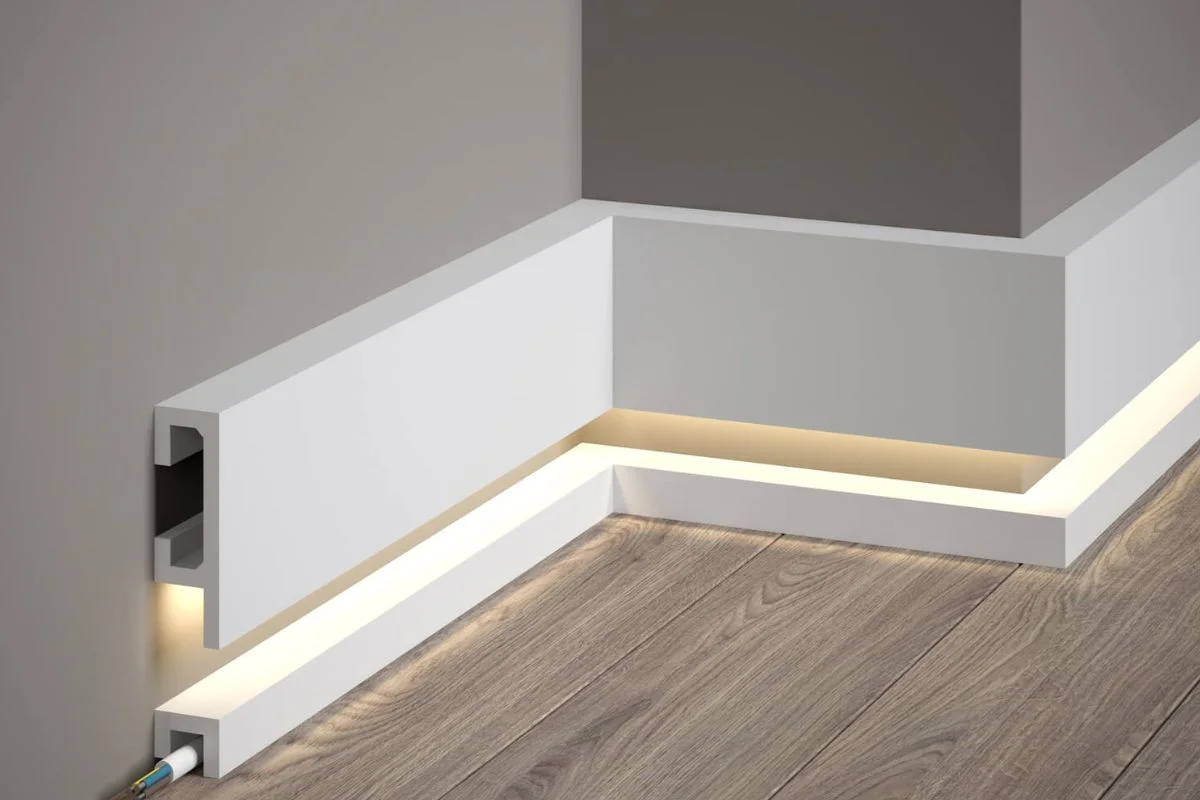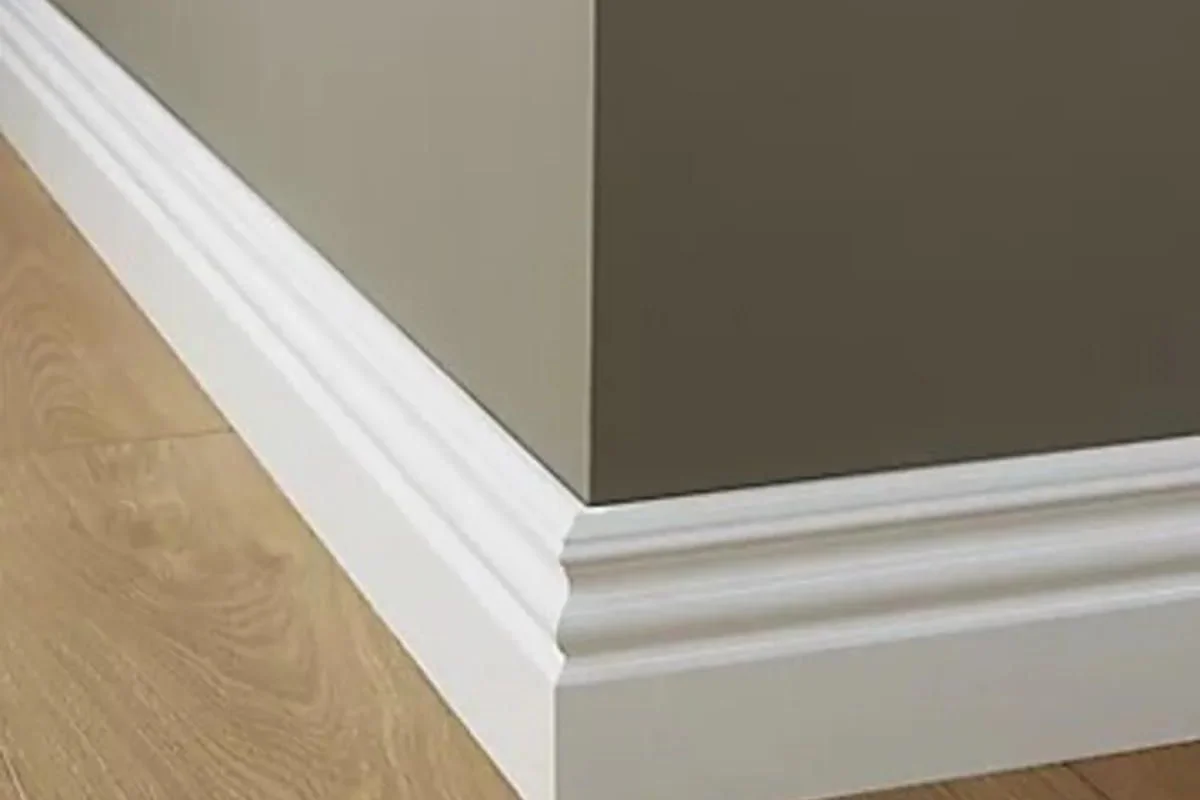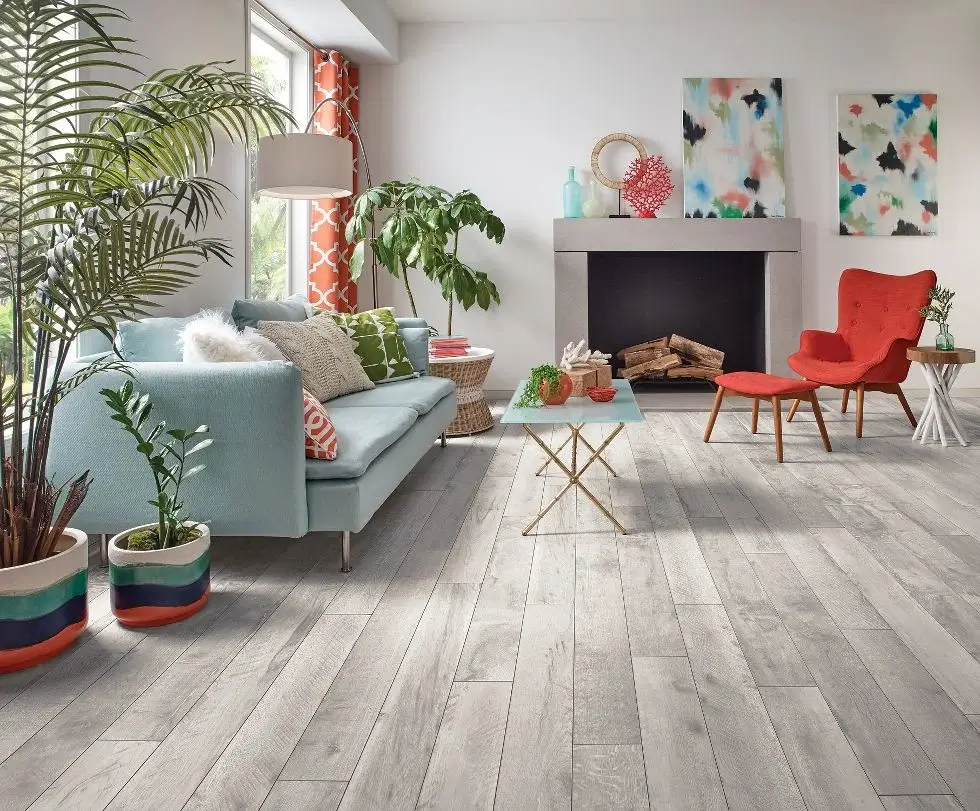Customizing wall skirting is a pivotal aspect of interior design that allows homeowners to infuse their living spaces with personal style and aesthetic flair. Wall skirting, often overlooked yet essential, serves as a transition between the wall and the floor, providing a finishing touch that can elevate the entire room’s appearance.
In today’s diverse design landscape, customization has become synonymous with creativity and individuality. From selecting materials and profiles to choosing colors and finishes, customizing wall skirting offers endless possibilities for tailoring the details of your home to align with your unique vision and preferences.
In this article, we delve into the art of customizing wall skirting to match your interior aesthetic. We explore the myriad options available, from traditional to contemporary, and highlight the transformative impact that personalized wall skirting can have on the ambiance and character of your space.
Whether you’re aiming for a sleek and modern look or a more rustic and traditional feel, custom wall skirting enables you to curate a cohesive and harmonious interior design scheme that reflects your personality and enhances your living environment. Join us as we embark on a journey of discovery and inspiration, exploring the boundless potential of customized wall skirting in creating truly exceptional homes.
Importance of Wall Skirting in Interior Design
Wall skirting, often referred to as baseboard or base molding, plays a crucial role in interior design by providing both functional and aesthetic benefits to living spaces. Here’s why wall skirting is an essential element in interior design:
Finishing Touch: Wall skirting serves as a finishing touch that completes the transition between the wall and the floor. It creates a seamless visual connection, enhancing the overall appearance of the room and giving it a polished look.
Protection: One of the primary functions of wall skirting is to protect the bottom of the wall from damage caused by furniture, foot traffic, and cleaning tools. It acts as a barrier, preventing scratches, dents, and scuff marks on the walls, especially in high-traffic areas.
Concealing Imperfections: Wall skirting helps conceal imperfections along the bottom edge of the wall, such as uneven surfaces, gaps, or wiring. It provides a clean and cohesive finish, hiding unsightly elements and creating a more aesthetically pleasing environment.
Visual Balance: Wall skirting contributes to the visual balance and proportion of a room by adding depth and dimension to the walls. It creates a sense of continuity between the floor and the walls, grounding the space and anchoring other design elements within the room.
Enhancing Style: Beyond its practical functions, wall skirting also enhances the style and character of a room. It comes in a variety of materials, profiles, and finishes, allowing homeowners to customize their choice to match the overall design theme and decor scheme of the space.
Defining Spaces: Wall skirting can help define different areas within a room, such as separating the walls from the floor in a distinct manner. This delineation adds architectural interest and visual clarity, especially in open-concept living spaces where defining boundaries is important.
Sound Insulation: In addition to its visual and protective qualities, wall skirting also contributes to sound insulation within a room. It helps reduce noise transmission between floors and walls, creating a quieter and more comfortable living environment.
Definition and Functionality of Wall Skirting
Wall skirting, also known as baseboard or base molding, refers to the trim installed along the bottom edge of interior walls where they meet the floor. It serves both practical and aesthetic purposes in interior design.
Definition: Wall skirting is a narrow strip of material, typically made of wood, MDF (medium-density fiberboard), PVC (polyvinyl chloride), or other composite materials. It is installed horizontally along the base of the wall, covering the joint between the wall and the floor.
Functionality:
Protection: One of the primary functions of wall skirting is to protect the bottom of the wall from damage caused by furniture, foot traffic, and cleaning activities. It acts as a barrier, preventing scratches, dents, and scuff marks on the walls.
Concealment: Wall skirting helps conceal imperfections along the bottom edge of the wall, such as gaps, uneven surfaces, or wiring. It provides a clean and cohesive finish, hiding unsightly elements and creating a more polished look.
Transition: Wall skirting creates a seamless transition between the wall and the floor, visually connecting the two surfaces and enhancing the overall appearance of the room.
Decoration: Beyond its practical functions, wall skirting also serves as a decorative element in interior design. It comes in various profiles, styles, and finishes, allowing homeowners to customize their choice to match the overall decor theme of the space.
Sound Insulation: Wall skirting contributes to sound insulation within a room by helping reduce noise transmission between floors and walls. It adds an additional layer of protection against sound vibrations and disturbances.
Common Materials Used in Wall Skirting Production
Wall skirting, also known as baseboard or base molding, is manufactured using a variety of materials, each offering distinct advantages in terms of durability, versatility, and aesthetics. Here are some of the most common materials used in wall skirting production:
Wood: Wood is a traditional and popular choice for wall skirting due to its natural beauty and versatility. Common types of wood used for wall skirting include pine, oak, maple, and poplar. Wood skirting can be stained, painted, or left unfinished to complement different interior design styles. It offers excellent durability and can be easily customized to match the decor of any room.
MDF (Medium-Density Fiberboard): MDF is a composite material made from wood fibers bonded together with resin under high pressure and heat. It is an affordable alternative to solid wood and offers a smooth and uniform surface for painting or finishing. MDF skirting is resistant to warping and cracking and is available in a variety of profiles and thicknesses.
PVC (Polyvinyl Chloride): PVC is a synthetic plastic material known for its durability, moisture resistance, and low maintenance requirements. PVC skirting is highly versatile and can be molded into various shapes and designs. It is suitable for use in areas with high humidity, such as bathrooms and kitchens, where moisture resistance is essential. PVC skirting is available in a range of colors and finishes to complement different decor styles.
Polyurethane: Polyurethane skirting is a lightweight and durable option that mimics the look of traditional wood molding. It is resistant to moisture, rot, and insects, making it ideal for use in humid environments. Polyurethane skirting is available in a wide range of designs and can be easily installed using adhesive or nails. It offers the beauty of wood without the maintenance requirements and is suitable for both interior and exterior applications.
Metal: Metal skirting, typically made of aluminum or stainless steel, is a sleek and modern option that adds a contemporary touch to interior spaces. Metal skirting is highly durable and resistant to corrosion, making it suitable for use in high-traffic areas. It is available in a variety of finishes, including brushed, polished, and matte, to complement different design aesthetics.
Composite Materials: Composite materials, such as fiberglass-reinforced plastic (FRP) or composite wood products, offer a combination of durability, moisture resistance, and affordability. Composite skirting is easy to install and requires minimal maintenance, making it a practical choice for residential and commercial applications.
The Role of Wall Skirting in Interior Design
Wall skirting, often overlooked but essential, plays a crucial role in interior design by serving both functional and aesthetic purposes. Here’s a closer look at the significance of wall skirting in interior design:
Finishing Touch: Wall skirting provides a finishing touch to interior spaces, completing the transition between the wall and the floor. It adds a sense of completeness and refinement to the room, enhancing its overall appearance.
Visual Continuity: Wall skirting helps create visual continuity within a space by bridging the gap between different surfaces. It establishes a seamless connection between the walls and the flooring, contributing to the room’s sense of cohesion and harmony.
Protective Barrier: One of the primary functions of wall skirting is to protect the bottom of the walls from damage caused by furniture, foot traffic, and cleaning activities. It acts as a protective barrier, shielding the walls from scratches, dents, and scuff marks.
Concealing Imperfections: Wall skirting helps conceal imperfections along the bottom edge of the walls, such as gaps, uneven surfaces, or wiring. It provides a clean and polished finish, hiding unsightly elements and creating a more aesthetically pleasing environment.
Defining Space: Wall skirting can help define different areas within a room, acting as a visual boundary between spaces. It delineates the lower portion of the walls, helping to define the proportions and layout of the room.
Enhancing Style: Beyond its practical functions, wall skirting contributes to the overall style and character of a room. It comes in a variety of materials, profiles, and finishes, allowing homeowners to customize their choice to match the overall design theme and decor style of the space.
Sound Insulation: Wall skirting also plays a role in sound insulation within a room. It helps reduce noise transmission between floors and walls, creating a quieter and more comfortable living environment.
Architectural Detail: Wall skirting adds architectural detail to interior spaces, enhancing the visual interest and sophistication of the room. It can be used to complement other design elements, such as crown molding, wainscoting, and trim work, creating a cohesive and polished look.
Maintenance and Cleaning Tips for Wall Skirting
Proper maintenance and regular cleaning of wall skirting are essential to preserve its appearance and functionality. Here are some tips for effectively maintaining and cleaning wall skirting:
Dust Regularly: Use a soft, dry cloth or a duster to remove dust and debris from the surface of the wall skirting regularly. Dust accumulation can dull the finish and make the skirting appear dirty.
Vacuum with Brush Attachment: Use a vacuum cleaner with a brush attachment to gently remove dust and dirt from the crevices and corners of the wall skirting. Be careful not to scratch or damage the surface of the skirting.
Wipe with Mild Soap Solution: For light stains or soiling, dampen a clean cloth with a mild soap solution (such as dish soap diluted in water) and gently wipe the surface of the wall skirting. Avoid using harsh chemicals or abrasive cleaners, as they may damage the finish of the skirting.
Avoid Excessive Moisture: Wall skirting, especially wooden skirting, should be protected from excessive moisture to prevent warping, swelling, or mold growth. Wipe up spills or splashes immediately to prevent water damage.
Dry Thoroughly: After cleaning the wall skirting with a damp cloth, dry it thoroughly with a clean, dry cloth to remove any moisture. Leaving moisture on the surface of the skirting can lead to water spots or damage over time.
Inspect for Damage: Regularly inspect the wall skirting for signs of damage, such as cracks, chips, or loose sections. Repair any damage promptly to prevent further deterioration and maintain the integrity of the skirting.
Touch Up Paint or Finish: If the paint or finish on the wall skirting starts to wear or fade, touch it up with matching paint or finish to maintain its appearance. Sand the surface lightly before applying the paint or finish to ensure proper adhesion.
Protect from Furniture: Use felt pads or furniture gliders under the legs of furniture to prevent scratches or damage to the wall skirting when moving furniture. Avoid dragging heavy furniture along the skirting, as this can cause dents or scratches.
Trim Overgrown Plants: If the wall skirting is located near indoor plants, trim any overgrown foliage to prevent it from rubbing against the skirting and causing damage.
Professional Maintenance: Consider hiring a professional cleaner or maintenance service for periodic deep cleaning and maintenance of wall skirting, especially in high-traffic areas or commercial settings.
Conclusion
In conclusion, wall skirting is a vital element of interior design that adds both functionality and aesthetic appeal to living spaces. Throughout this article, we’ve explored the importance of wall skirting, its role in defining space, protecting walls, and enhancing the overall look of a room.








